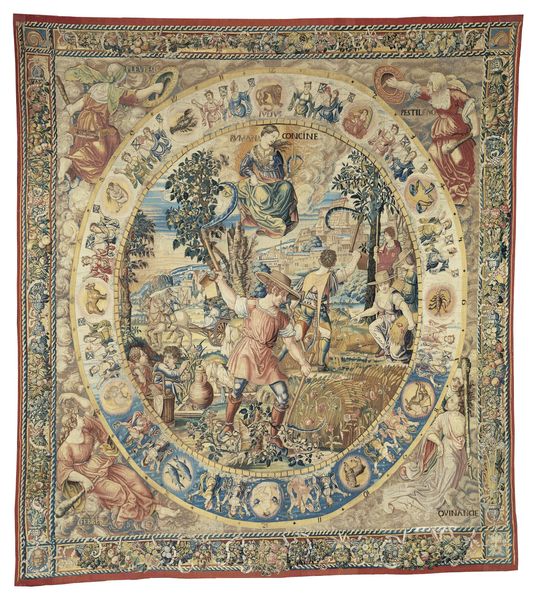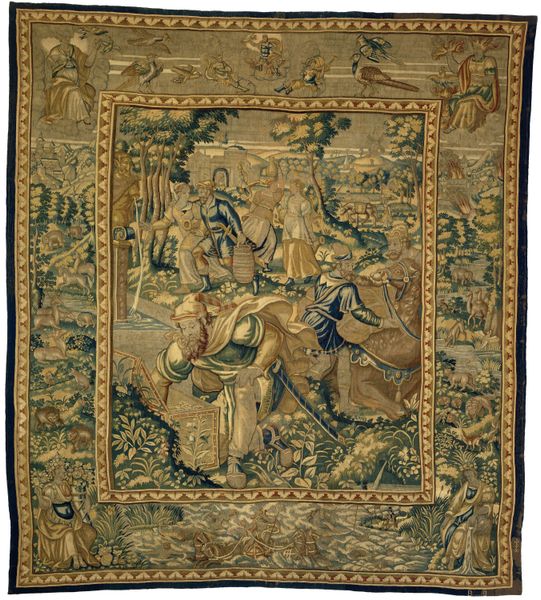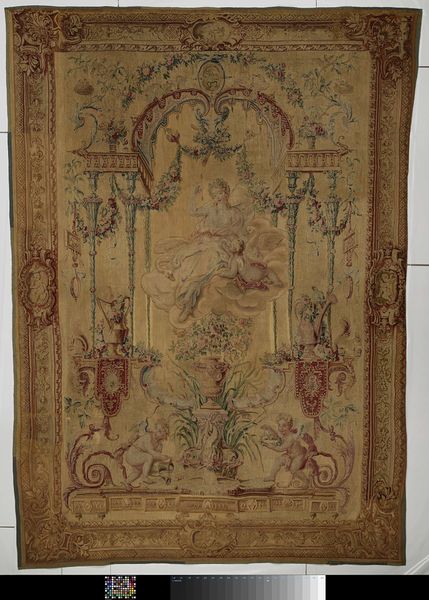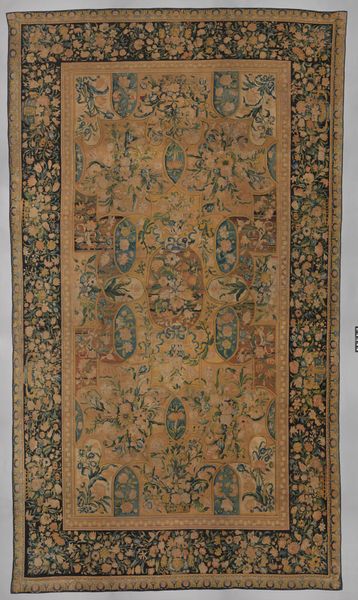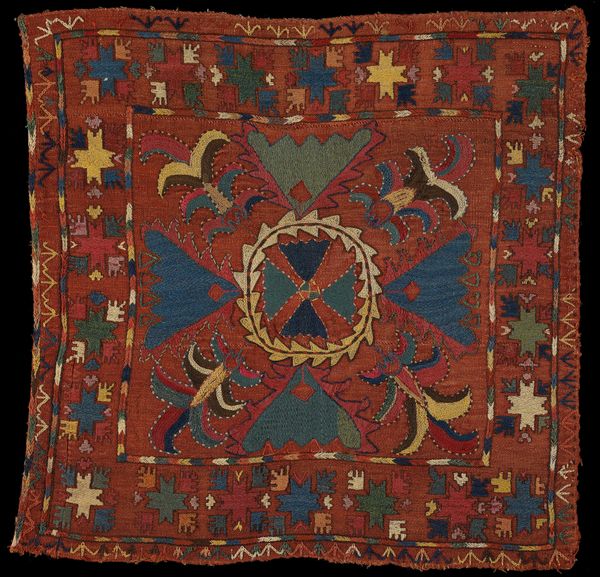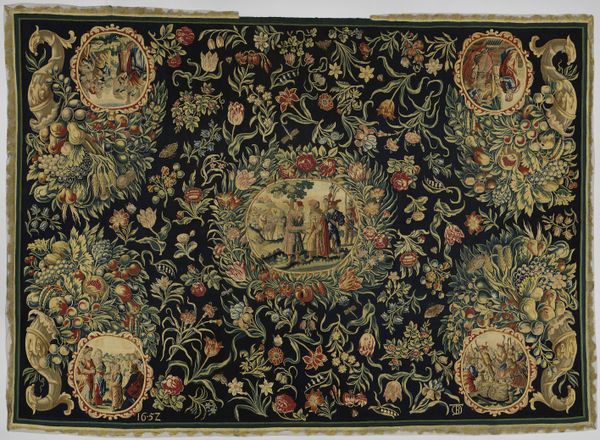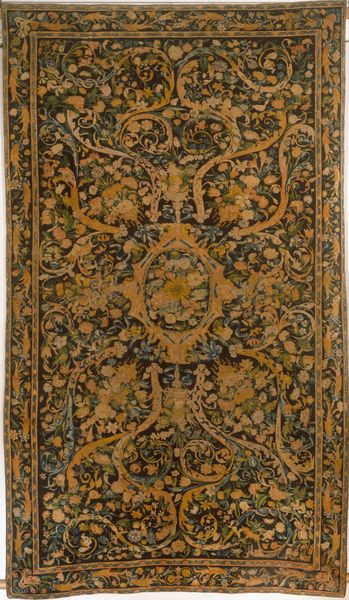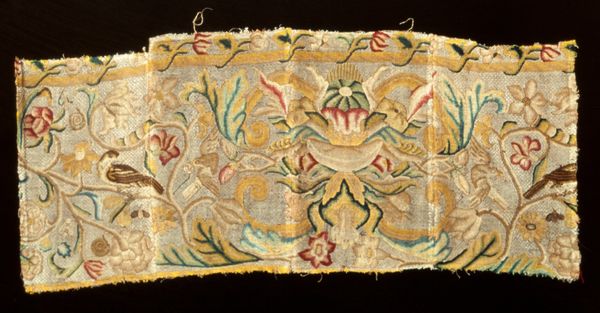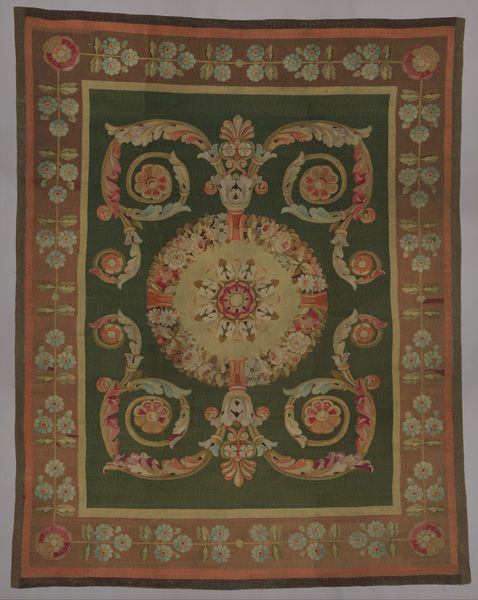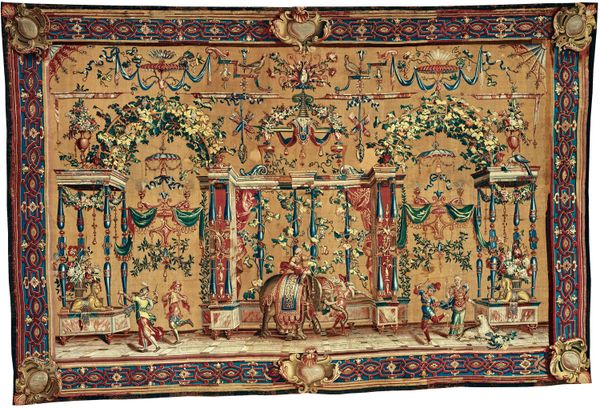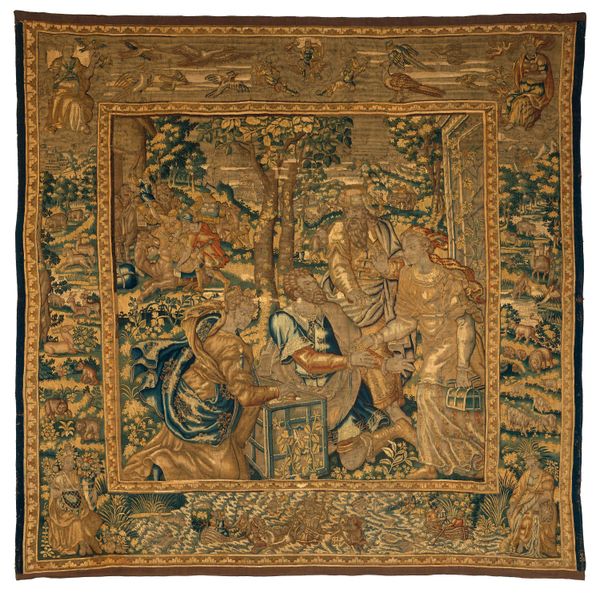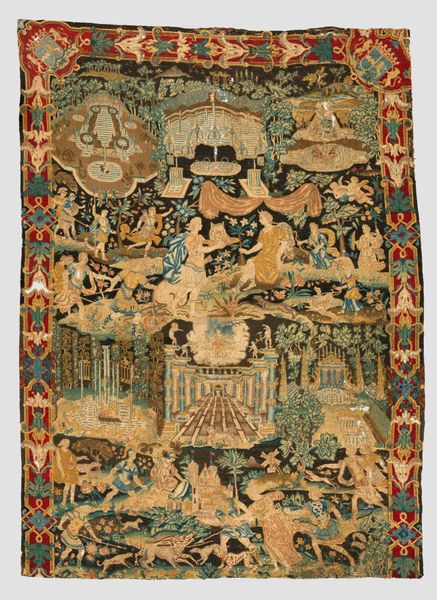
weaving, textile
#
medieval
#
weaving
#
landscape
#
textile
#
flower
#
11_renaissance
#
history-painting
Dimensions: height 201 cm, height 197 cm, width 172.5 cm, width 170.5 cm
Copyright: Rijks Museum: Open Domain
Editor: We're looking at a tapestry created around 1540 to 1555, titled "Tapestry with the arms of Emperor Charles V," woven by Willem de Pannemaker. The detail is incredible! It feels like the artist has crammed the entire world into this textile. What strikes you most about this piece? Curator: It’s a potent statement of power, isn't it? Tapestries like this weren’t just decorative; they were powerful political tools. The landscape setting with the arms of Charles V worked to portray him and his dynasty as rulers of a bountiful, fertile land, sanctioned by God. Editor: So, this isn’t just pretty flowers and leaves; it’s carefully constructed imagery for propaganda? Curator: Precisely! Think about where this tapestry would have been displayed – in palaces, cathedrals, spaces meant to impress. Consider the audiences – nobles, clergy, foreign dignitaries. The tapestry serves as a visual assertion of Charles V’s authority, embedding his rule within a divine and natural order. The inclusion of his coat of arms surrounded by that dense verdure visually equated his reign with that thriving and ordered "natural" landscape. Does this resonate with you, seeing it as political statement, and how effective do you think it is? Editor: It's fascinating how art is intertwined with historical and political power! Viewing the Tapestry now through that lens, helps appreciate how deeply it communicated with audiences. Thank you for providing this illuminating perspective. Curator: Absolutely, looking at art in relation to culture always unlocks new meanings and avenues for interpreting it.
Comments
rijksmuseum about 2 years ago
⋮
This tapestry symbolizes the power of the Habsburg Emperor Charles V. Surrounded by abundant plants and flowers, a crowned double-headed eagle bears his coat of arms. Charles was ruler, among others, of Austria, Hungary, Sicily, Spain, Burgundy, and the Low Countries. Until his abdication in 1555, he was the most powerful man in Europe. Such tapestries were probably used on festive occasions.
Join the conversation
Join millions of artists and users on Artera today and experience the ultimate creative platform.

